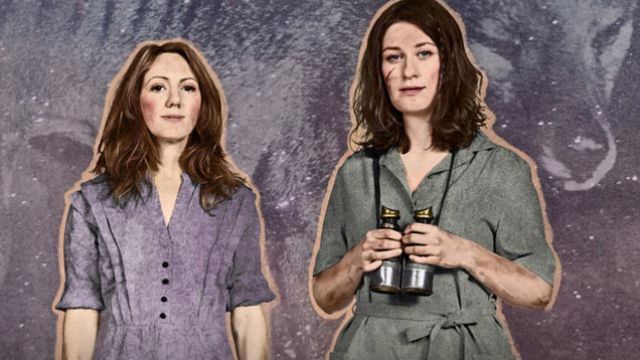They Saw A Thylacine
They Saw A Thylacine tells two stories of Tasmanian tigers. One is in the Beaumaris Zoo in Hobart – her story told via the eyewitness account of Alison Reid (Justine Campbell), the zookeeper’s daughter. Interwoven – or, more accurately, interspersed - with Alison’s tale is the account from an earlier time by a tough, no nonsense bush woman, Beatie or Beatrix (Sarah Hamilton), of her attempt to capture a solitary tiger so as to save and protect her.
The last thylacine (or ‘Tasmanian tiger’) died in that zoo in 1936, although to this day there are constant if unconfirmed ‘sightings’. Designated as a pest and a menace to livestock, there was a bounty on its head. All that’s left is a three-minute silent film of that last one – a cadaverous creature pacing back and forth in its cheerless concrete cage.
The first few minutes of this show may not seem promising. It joins that genre of direct address storytelling, built from anecdotes of real experience. (Another example is, say, Tom Holloway’s Red Sky Morning.) Here, two monologues about Tasmanian tigers are told to the audience – and the two run parallel, never intersecting. Is this theatre? As it proceeds, definitely yes – although I confess to a preference for character interaction.
But such is the passion and commitment of the performers, and the vivid pictures of people, places and feelings that they create, that we soon come to hang on every word to know what happens next. Ms Hamilton and Ms Campbell are contrasting performers: Hamilton tall, dark, fiery, with speech that is both rough and lyric; Campbell smaller, fair, bluntly forceful – playing a 1930s woman who’s immediately recognisable. But as their stories come to complement each other, so do they.
There is poetry in Beatie’s descriptions of nature, but in her account there is also bitter humour, anger and drama, aided by Ms Campbell’s extraordinary ability to transform just her voice (turned away from Hamilton and the audience) into those of the venal and stupid men Beatie encounters.
Indeed, venal and stupid men are a clear presence here. Beatie competes with a sneering trapper (he insists on calling her ‘Trixie’ or ‘Trixi-Belle’), who figures a tiger with a bounty on its head is worth more dead than alive.
In Alison’s more ironic tale, laced with scathing sarcasm, the dunderhead zoo management refuses to promote her to zookeeper, although she is more than qualified, but still expects her to work for free, as the zoo goes into decline through neglect and indifference and – how modern! – budget and staff cuts. And then, over both stories, is the implication of our callous disregard – even hatred - for nature itself, especially that which is native or indigenous.
Matthew Adey’s lighting of the near bare stage is nicely subtle, responding to the text and enhancing emotion – as does Jethro Woodward’s sound design.
The thylacine is the shy creature (somewhat idealised since, let’s face it, the animal was not pretty) on the Cascade Beer label. Isn’t that the way? Drive it to extinction and then sentimentalise it. They Saw A Thylacine may be not far from agit-prop, but it is skilfully written, poetic, focussed in its anger, and funny agit-prop. It may not be a ‘play’, but it reverberates long after you’ve left the theatre.
Michael Brindley
Subscribe to our E-Newsletter, buy our latest print edition or find a Performing Arts book at Book Nook.

